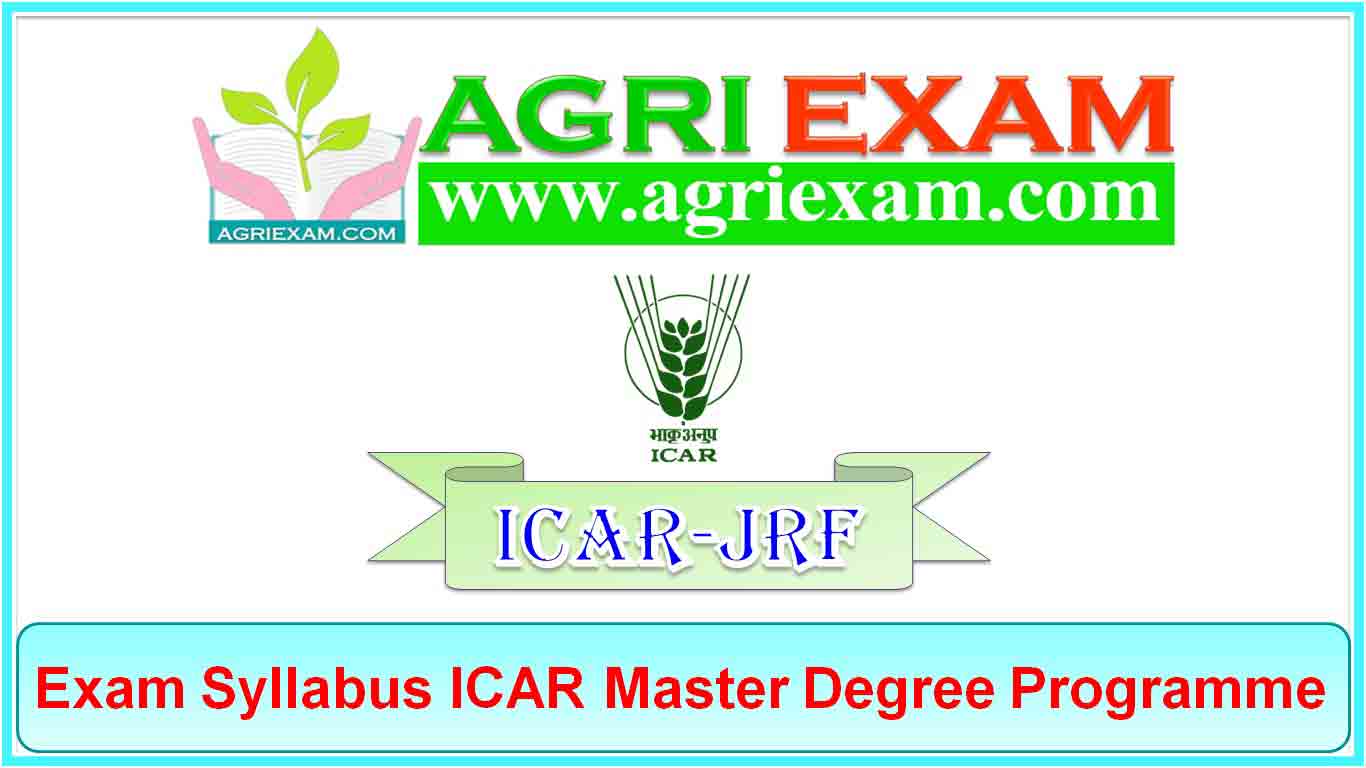MAJOR SUBJECT GROUP – Veterinary Science

ICAR JRF Syllabus VETERINARY SCIENCE
Sub-Subjects:
14.1: Veterinary Anatomy/ Veterinary Anatomy & Histology,
14.2: Veterinary Gynaecology and Obstetrics/Ani. Reproduction, 14.3:Vety. Medicine (Clinical/Preventive),
14.4: Veterinary Parasitology,
14.5: Veterinary Pharmacology and Toxicology,
14.6: Veterinary Pathology
14.7: Wildlife Science/ Wildlife Health Mgt.
14.8: Vety.Virology,
14.9: Vety. Immunology,
14.10: Veterinary Microbiology & Immunology/Bacteriology,
14.11: Veterinary Surgery & Radiology
14.12: Veterinary Public Health & Epidemiology/Vety. Public Health/Vety.Epidemiology/ Vety. Epidemiology & Preventive Medicine
UNIT I:Structure of cells, cell organelles, chromosome structure and functions, cell growth, division and differentiation and functions. Structure and function of basic tissues-epithelium, connective tissue, muscle and nervous tissue. Gross Morphology, Histology and physiology of mammalian organs and systems, major sense organs and receptors, circulatory system. Digestion in simple stomached animals, birds and fermentative digestion in ruminants, Kidney and its functions-respiratory system-animal behaviour- growth-influence of environment on animal production-biotechnology in animal production and reproduction- electrophysiology of different types of muscle fibres. Exocrine and endocrine glands, hormones and their functions, blood composition and function. Homeostasis, osmoregulation and blood clotting. Gametogenesis and development of urogenital organs. Boundaries of body cavities. Pleural and peritoneal reflections.
UNIT-II: Classification and growth characteristics of bacteria, important bacterial diseases of livestock and poultry, general characters, classification of important fungi. Nature of viruses, morphology and characteristics, viral immunity, important viral diseases of livestock and poultry. Viral vaccines. Antigen and antibody, antibody formation, immunity, allergy, anaphylaxis, hypersensitivity, immunoglobulins, complement system. Etiology of diseases and concept, extrinsic and intrinsic factors, inflammation, degeneration, necrosis, calcification, gangrene, death, atrophy, hypertrophy, benign and malignant tumours in domestic animals. General classification, morphology, life cycle of important parasites, important parasitic diseases (Helminths, Protozoa and Arthropods) of veterinary importance with respect to epidemiology, symptoms, pathogeneses, diagnosis, immunity and control.
UNIT-III: Clinical examination and diagnosis, Etiology, epidemiology, symptoms, diagnosis, prognosis, treatment and control of diseases affecting different body systems of various species of domestic animals, epidemiology— aims, objectives, ecological concepts and applications. General surgical principles and management of surgical cases. Types, administration and effects of anaesthesia. Principles and use of radiological techniques in the diagnosis of animal diseases.
Estrus and estrus cycle in domestic animals, Synchronization of estrus, fertilization, pregnancy diagnosis, parturition, management of postpartum complications dystokias and its management, fertility, infertility and its management, artificial insemination.
UNIT-IV: Zoonotic diseases through milk and meat, Zoo animal health. Source and nature of drugs, pharmacokinetics, Chemotherapy-sulpha drugs, antibiotics, mechanism and problem of drug resistance. Drug allergy, important poisonous plants, toxicity of important agro-chemicals and their detoxification, drugs action on different body systems.
ICAR JRF Syllabus VETERINARY SCIENCE
Can I give the JRF exam to get admission in veterinary science (PG), but now I’m doing Bsc Agriculture from UGC approved university (non icar).
If yes then what will be the syllabus for it?
It’s not possible